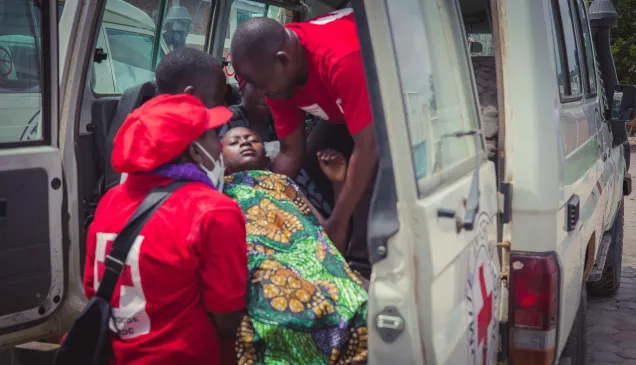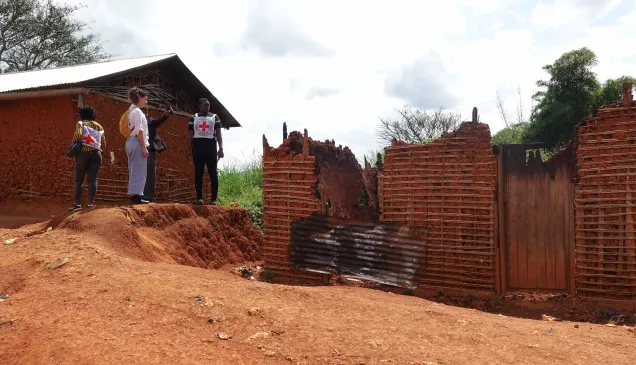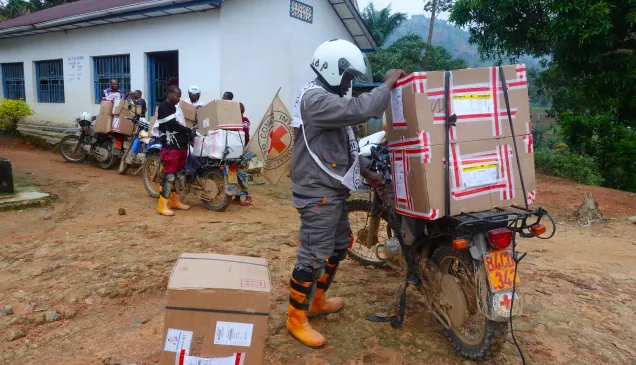Eastern Democratic Republic of Congo: Living with the scars of conflict
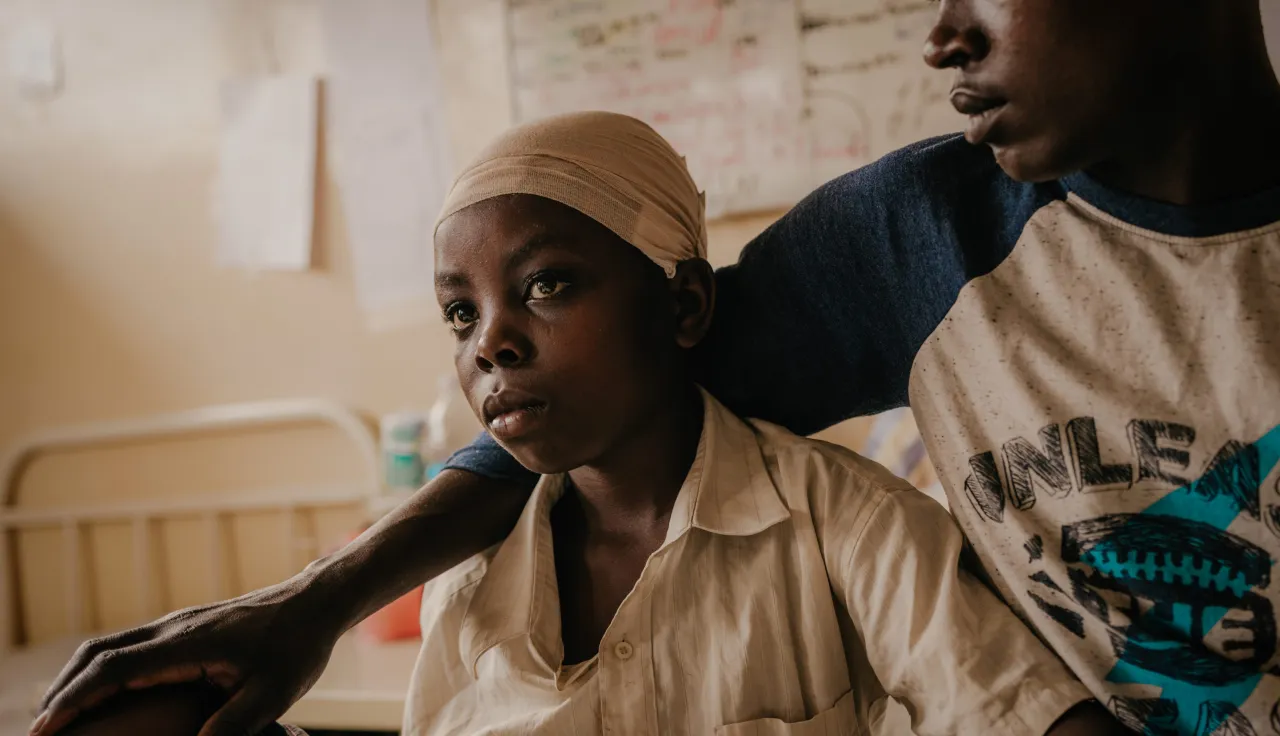
In the eastern Democratic Republic of the Congo, war continues to leave deep scars — both physical and psychological. As the fighting escalates, civilians are caught in a relentless cycle of violence. Fleeing under a barrage of rockets and shellfire, millions have been forced to abandon their homes, seeking refuge in camps where the future remains uncertain. But for many, the consequences of conflict reach beyond displacement—they are imprinted on their bodies.
At Ndosho Hospital in Goma, a ceaseless flow of patients bears witness to the brutal reality of war. In the face of these irreversible losses, the ICRC’s physical rehabilitation programme strives to restore mobility and dignity, helping those affected take steps — literal and figurative — towards a new future.
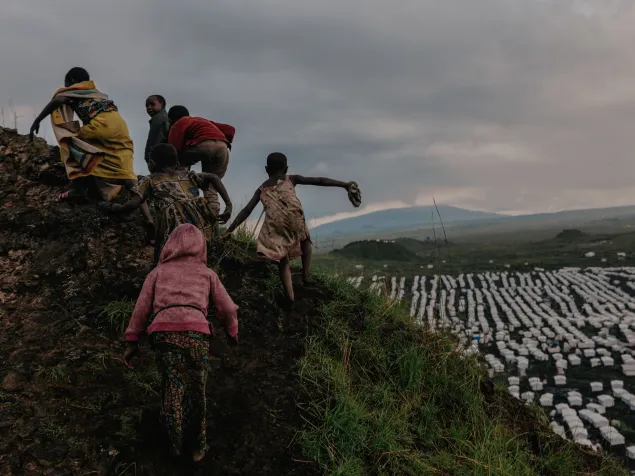
Children climb the sides of an extinct volcano crater over the Lushagala camp, home to over 10,000 displaced civilians.
Fleeing to survive: Millions of Congolese forced into exile
With 4.6 million internally displaced people, North and South Kivu are among the hardest-hit regions of the DRC, where families are uprooted time and again. Many have lost everything — their homes, farmland, and sources of income.
Crowded into makeshift camps or relying on struggling relatives for shelter, these displaced communities endure precarious living conditions. Access to clean water, food, and healthcare remains an ongoing challenge, exacerbated by a lack of infrastructure and persistent violence. Humanitarian organizations are striving to respond, but the needs far outstrip the available resources.
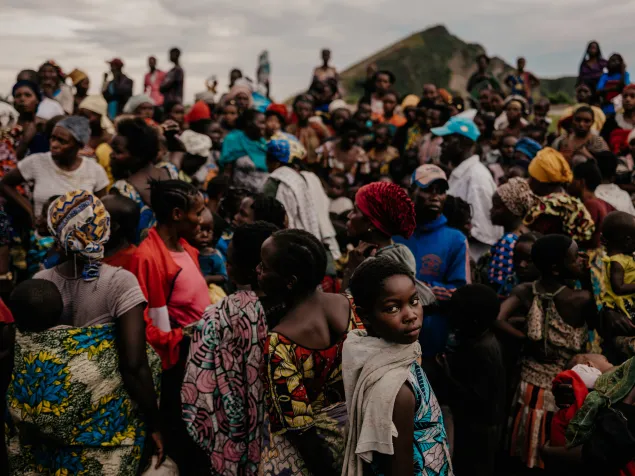
Civilians wait for a food distribution at the Lac Vert displacement camp. The majority of residents of this camp fled the farming territory of Masisi, now almost entirely occupied by fighters after months of brutal fighting.
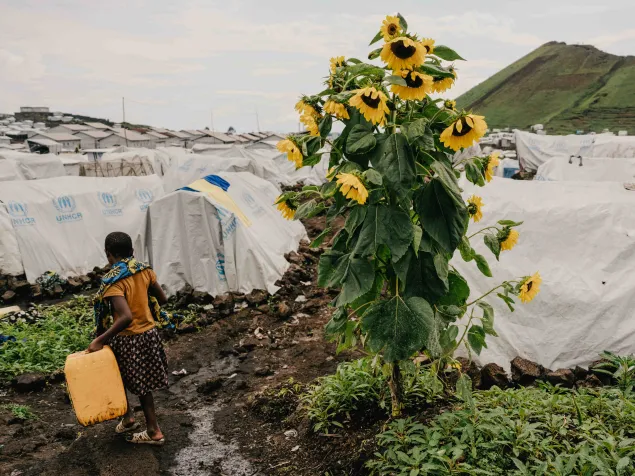
A girl returns from collecting water from a distribution point in the Lushagala displacement camp.
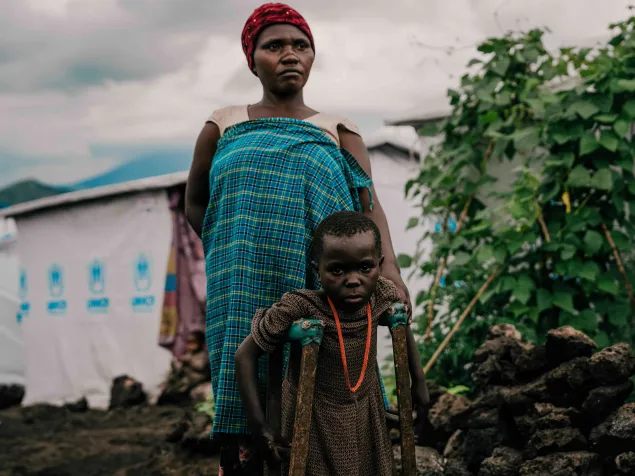
Zawadi Furaha and her daughter Chance.
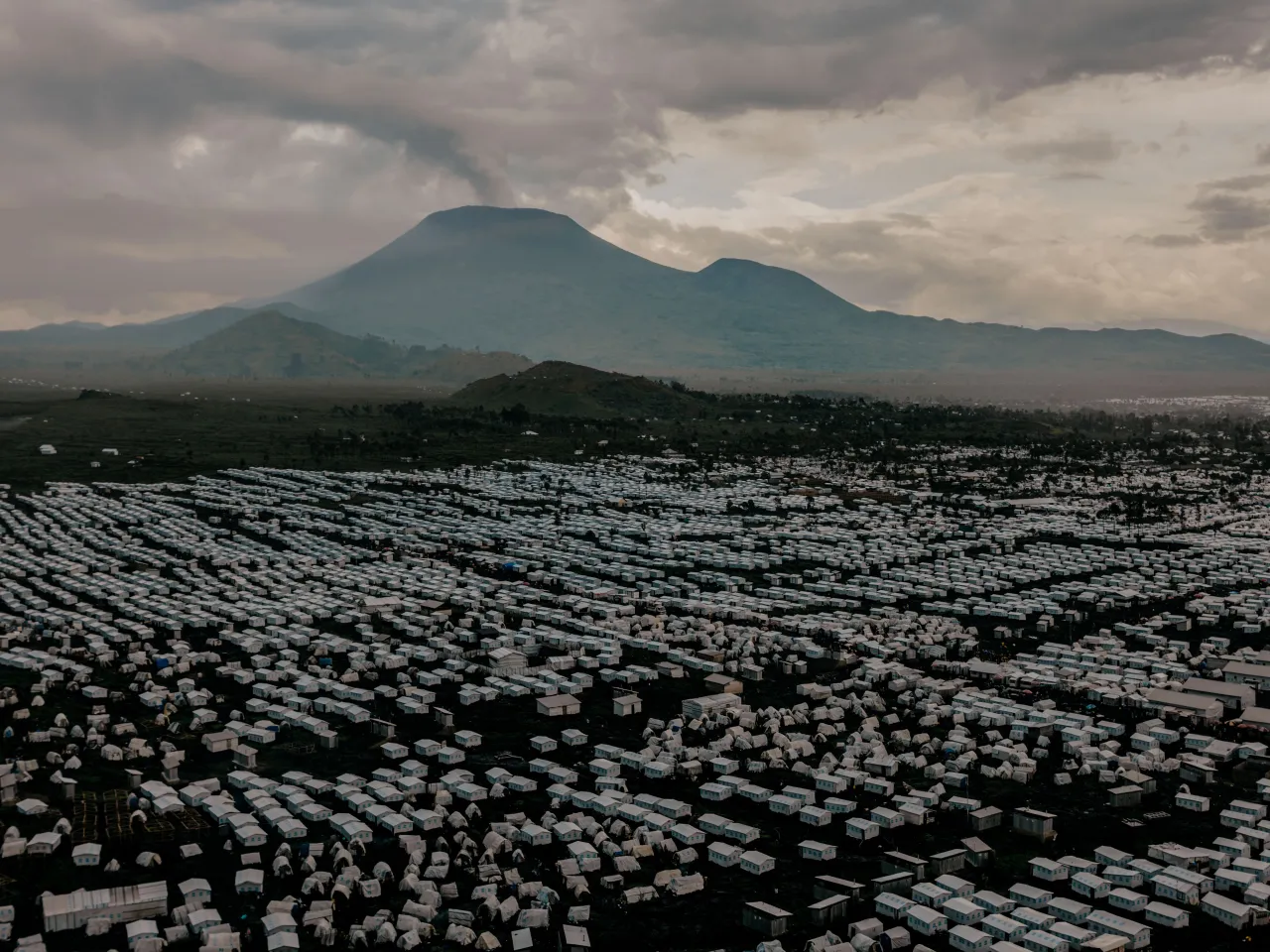
Hospitals under strain: An unprecedented influx of wounded
As the fighting in North and South Kivu intensifies, hospitals are overwhelmed. Since January 2025, more than 1,400 weapon-wounded patients have been admitted to four ICRC-supported hospitals. Nearly half are civilians, including many women and children.
From Goma to Beni and Bukavu, medical facilities are at full capacity: patients line the hallways, cafeterias are converted into hospital wards, and parking lots are used as triage zones. With limited resources, medical staff face critical shortages of equipment, making it even harder to treat the injured.
Despite the rising medical needs, accessing care remains a major challenge in a region caught in a cycle of violence.
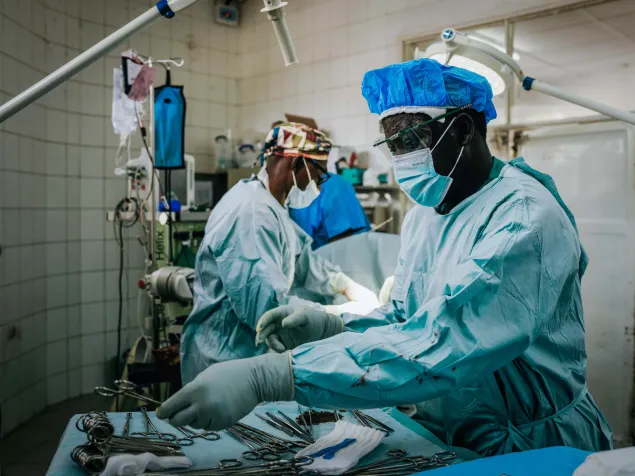
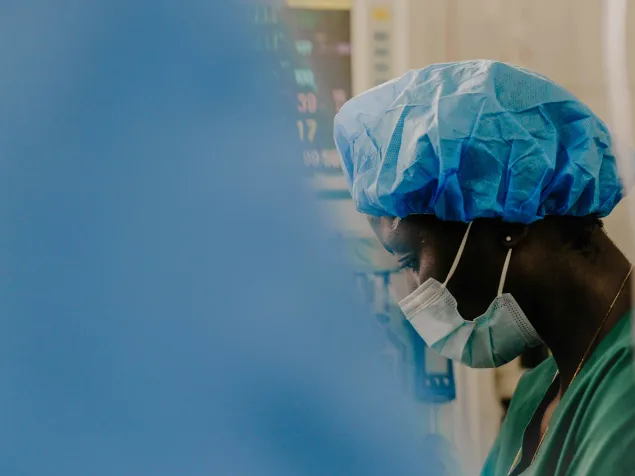
Surgical teams in the operation theater of Goma’s Ndosho hospital. Between 2023 and 2025, over 1300 individuals injured by weaponry have been treated at the hospital.
Restoring independence and repairing lives
For many in eastern DRC, amputation has become a devastating consequence of war. Between 2023 and 2024, the ICRC’s physical rehabilitation programme produced more than 400 prostheses and orthoses, giving injured individuals a chance to regain mobility and independence.
These devices are more than just medical tools — they are lifelines, enabling survivors to rebuild their futures.
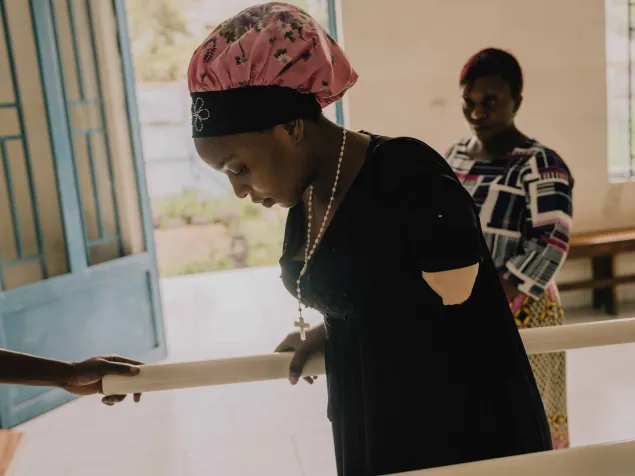
Patient Naomi Kabuo during a sequence of exercises in the Shirika orthopaedic centre of Goma.
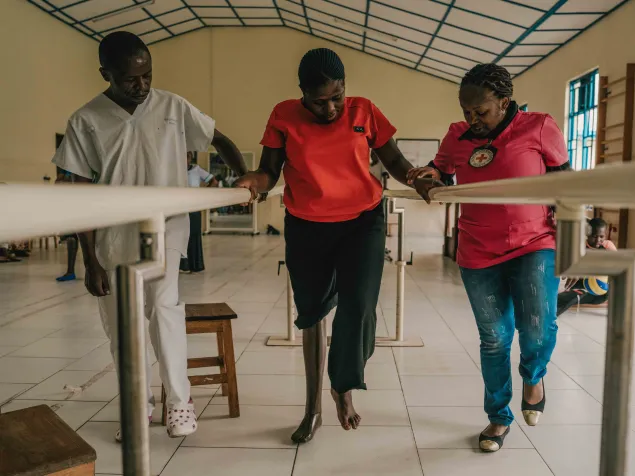
Rosette Katungu, who was shot in an ambush that claimed the life of her grandmother practices balancing on a prosthetic leg.
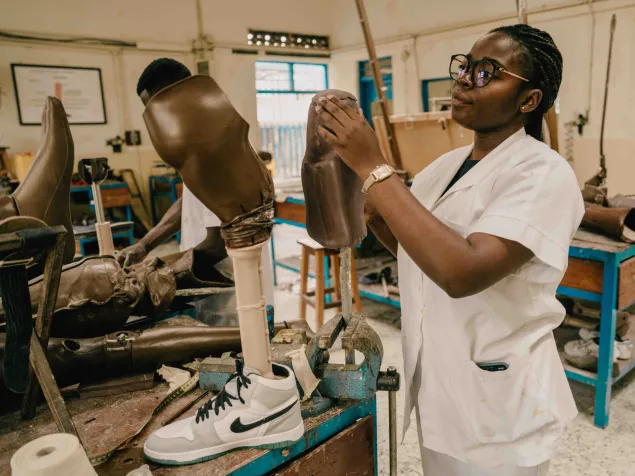
ICRC staff members fabricate new prosthetic limbs at the Shirika orthopaedic centre of Goma.

A long road to recovery
For the people of eastern DRC, survival is only the beginning. Beyond the physical wounds, the scars of conflict run deep, leaving many to navigate profound loss, trauma, and uncertainty.
While humanitarian efforts provide lifesaving medical care, rehabilitation, and essential aid, the sheer scale of suffering demands sustained attention and action. Respect of all parties for international humanitarian law (IHL) is critical to ensuring that civilians, medical personnel, and humanitarian workers are protected from the devastating consequences of war. Yet, as violence continues to uproot lives, millions remain trapped in a cycle of displacement and hardship. For them, rebuilding is not just about healing the body — it is about reclaiming dignity, stability, and hope for the future.
Adapted from the article originally published in French on ICRC blog, L'Humanitaire dans tous ses États

